When it comes to the compact luxury SUV segment, the Audi Q2 and BMW X1 have emerged as two compelling choices for discerning drivers. Each vehicle carries the weight of its brand's legacy, showcasing premium quality, cutting-edge technology, and impressive performance. This article dives deep into the technical specifications and innovative features of both vehicles, allowing potential buyers to make an informed decision.
Audi Q2 vs BMW X1 – Performance, range & efficiency compared
Compare performance, boot capacity, efficiency and price at a glance.
Find out which car is the better choice for you – Audi Q2 or BMW X1?
Design and Aesthetics
The Audi Q2 stands out with its bold and striking design language, characterized by sharp lines and a sporty profile. With a length of 4208 mm and a width of 1794 mm, it offers a compact yet commanding presence on the road. Audi's signature Singleframe grille further enhances its aggressive stance.
Conversely, the BMW X1 adopts a more traditional SUV silhouette, blending functionality with subtle elegance. Measuring at 4500 mm in length and 1845 mm in width, it feels larger and roomier inside, which can be appealing for families or those who value space.
Performance and Engine Options
The Audi Q2 offers a range of engine configurations, starting from frugal 116 HP petrol engines to a robust 300 HP variant. The Q2 also features both front-wheel drive and all-wheel drive options, catering to different driving preferences. Acceleration is noteworthy, with the fastest model reaching 0-100 km/h in just 4.9 seconds.
In comparison, the BMW X1 presents a wider variety of engine choices, including diesel and petrol options, with power outputs ranging from 136 HP to an impressive 326 HP for the plug-in hybrid model. Its acceleration capabilities are also strong, with the most powerful variant achieving 0-100 km/h in 5.4 seconds. Furthermore, the X1 includes an electric range of 83 km for the plug-in hybrid version, symbolizing the brand's commitment to sustainability.
Fuel Efficiency and Emissions
Fuel consumption is a critical factor for many buyers. The Audi Q2 is relatively efficient, with fuel consumption ranging from 4.8 to 8.4 L/100km depending on the engine. CO2 emissions vary as well, with figures between 127 to 190 g/km. This underscores Audi's endeavor to balance performance with environmental considerations.
The BMW X1 also delivers impressive fuel efficiency, with the cleanest diesel variants reaching as low as 4.6 L/100km. Its CO2 emissions are more favorable at 120 to 175 g/km, particularly appealing for environmentally conscious drivers.
Interior and Technology
Moving inside, the Audi Q2 offers a refined cabin loaded with technology. A standout feature is the virtual cockpit, which replaces conventional dials with a fully digital display, enhancing the driving experience. The MMI infotainment system is user-friendly, although some may find its touch response less intuitive than competitors.
The BMW X1, on the other hand, is equipped with a highly regarded infotainment system, the BMW iDrive, known for its practicality and user interface. Both vehicles can seat five comfortably, but the X1's trunk capacity edges out that of the Q2, offering between 490 to 540 liters compared to Q2's 405 liters.
Safety and Driver Assistance
Safety is paramount in both models. The Audi Q2 comes standard with advanced driver-assistance systems, including adaptive cruise control, lane departure warning, and collision mitigation systems. These features make urban driving and long trips considerably safer.
Meanwhile, the BMW X1 includes similar safety provisions but adds a unique Driving Assistant Professional package in higher trims that encompasses more advanced features, such as active lane-keeping assistance and a more sophisticated parking assistant. It's designed to enhance driving comfort and safety during long journeys.
Conclusion
Choosing between the Audi Q2 and BMW X1 ultimately depends on individual preferences and needs. The Q2 excels in sporty styling and performance with decent efficiency, while the X1 impresses with its spaciousness, advanced technology, and diverse powertrains, especially its electric options.
Both SUVs hold their ground firmly in the competitive luxury segment, combining performance, comfort, and safety innovations. Prospective buyers should consider their priorities—whether it's sporty aesthetics, engine variety, or high-tech features—before making the final choice.
Here’s where it gets real: The technical differences in detail
Costs and Efficiency:
Price and efficiency are often the first things buyers look at. Here it becomes clear which model has the long-term edge – whether at the pump, the plug, or in purchase price.
Audi Q2 has a significantly advantage in terms of price – it starts at 24900 £, while the BMW X1 costs 38200 £. That’s a price difference of around 13371 £.
Fuel consumption also shows a difference: BMW X1 manages with 0.80 L and is therefore decisively more efficient than the Audi Q2 with 4.80 L. The difference is about 4 L per 100 km.
Engine and Performance:
Power, torque and acceleration say a lot about how a car feels on the road. This is where you see which model delivers more driving dynamics.
When it comes to engine power, the BMW X1 has a barely noticeable edge – offering 326 HP compared to 300 HP. That’s roughly 26 HP more horsepower.
In acceleration from 0 to 100 km/h, the Audi Q2 is somewhat quicker – completing the sprint in 4.90 s, while the BMW X1 takes 5.40 s. That’s about 0.50 s faster.
There’s no difference in top speed – both reach 250 km/h.
There’s also a difference in torque: BMW X1 pulls to a small extent stronger with 477 Nm compared to 400 Nm. That’s about 77 Nm difference.
Space and Everyday Use:
Whether family car or daily driver – which one offers more room, flexibility and comfort?
Both vehicles offer seating for 5 people.
In curb weight, Audi Q2 is to a small extent lighter – 1330 kg compared to 1575 kg. The difference is around 245 kg.
In terms of boot space, the BMW X1 offers evident more room – 540 L compared to 405 L. That’s a difference of about 135 L.
In maximum load capacity, the BMW X1 performs noticeable better – up to 1600 L, which is about 550 L more than the Audi Q2.
When it comes to payload, Audi Q2 minimal takes the win – 510 kg compared to 500 kg. That’s a difference of about 10 kg.
Who comes out on top?
Overall, the BMW X1 shows itself to be wins the duel decisively and secures the title of DriveDuel Champion.
It convinces with the more balanced overall package and proves to be the more versatile choice for everyday use.
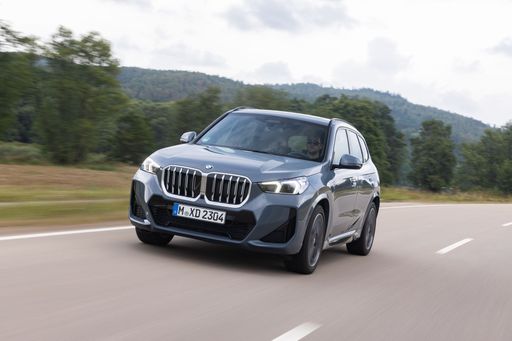 @ BMW Group Press
@ BMW Group Press
BMW X1
Audi Q2
The Audi Q2 captures attention with its bold and distinctive design, combining compact dimensions with a sporty silhouette. Inside, the cabin boasts high-quality materials and a modern infotainment system, ensuring a comfortable driving experience. With its agile handling and efficient performance, the Q2 is a perfect urban companion for those seeking both style and functionality.
details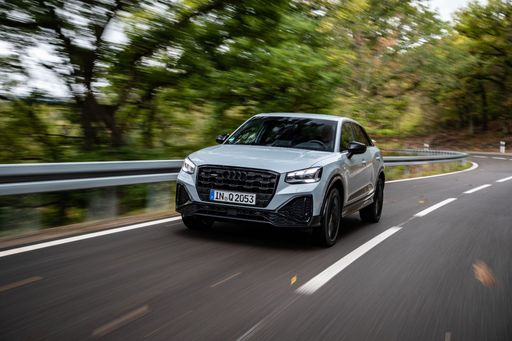 @ Audi AG
@ Audi AG
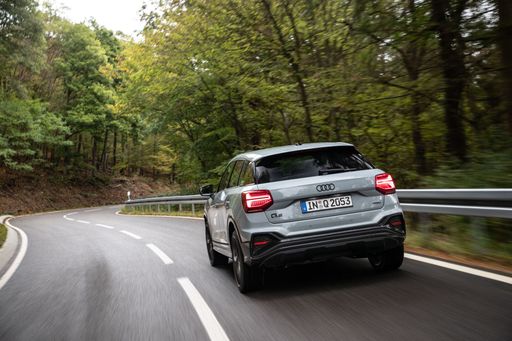 @ Audi AG
@ Audi AG
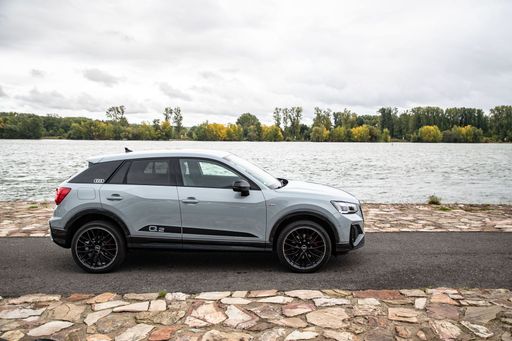 @ Audi AG
@ Audi AG
 @ Audi AG
@ Audi AG
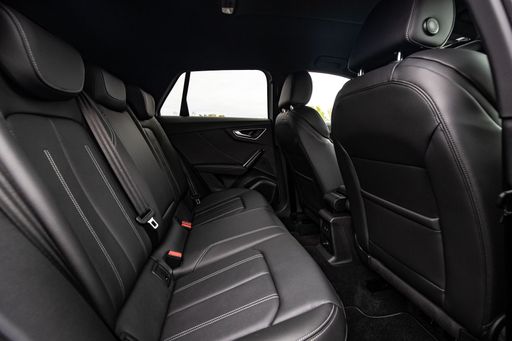 @ Audi AG
@ Audi AG
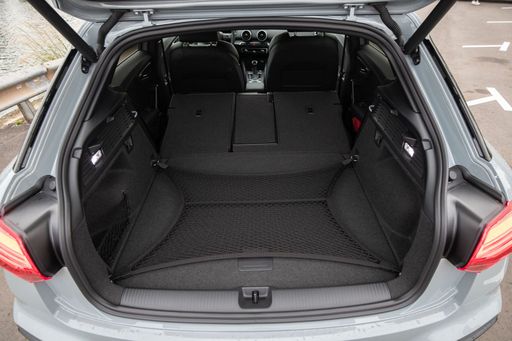 @ Audi AG
@ Audi AG
BMW X1
The BMW X1 brings a premium feel to compact crossover life, wrapping practical space and agile handling into a tidy, upscale package. It’s ideal for buyers who want BMW driving dynamics without the bulk, offering everyday comfort and a few clever tricks to keep the commute interesting.
details @ BMW Group Press
@ BMW Group Press
 @ BMW Group Press
@ BMW Group Press
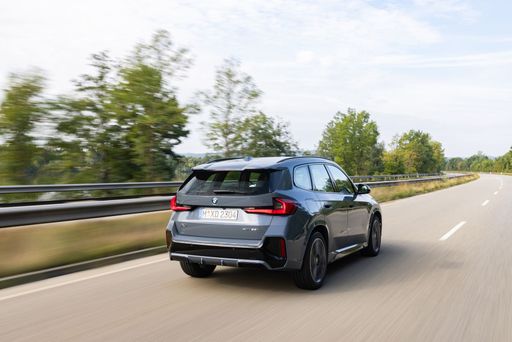 @ BMW Group Press
@ BMW Group Press
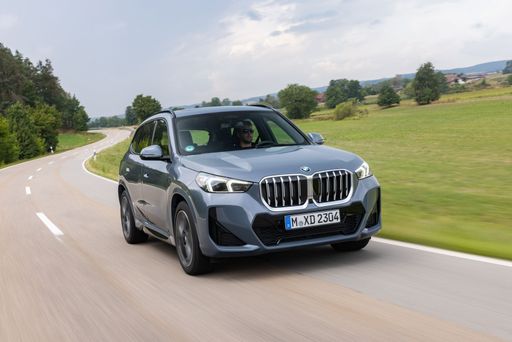 @ BMW Group Press
@ BMW Group Press
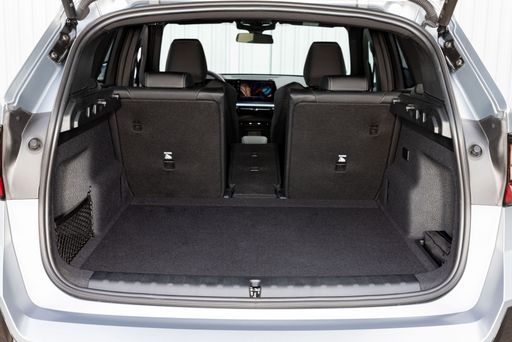 @ BMW Group Press
@ BMW Group Press
 @ Audi AG
@ Audi AG
|
 @ BMW Group Press
@ BMW Group Press
|
|
|
|
Costs and Consumption |
|
|---|---|
|
Price
24900 - 43600 £
|
Price
38200 - 55500 £
|
|
Consumption L/100km
4.8 - 8.1 L
|
Consumption L/100km
0.8 - 7.7 L
|
|
Consumption kWh/100km
-
|
Consumption kWh/100km
-
|
|
Electric Range
-
|
Electric Range
83 km
|
|
Battery Capacity
-
|
Battery Capacity
14.20 kWh
|
|
co2
127 - 183 g/km
|
co2
17 - 175 g/km
|
|
Fuel tank capacity
50 - 55 L
|
Fuel tank capacity
47 - 54 L
|
Dimensions and Body |
|
|---|---|
|
Body Type
SUV
|
Body Type
SUV
|
|
Seats
5
|
Seats
5
|
|
Doors
5
|
Doors
5
|
|
Curb weight
1330 - 1610 kg
|
Curb weight
1575 - 1935 kg
|
|
Trunk capacity
355 - 405 L
|
Trunk capacity
490 - 540 L
|
|
Length
4208 - 4216 mm
|
Length
4500 - 4505 mm
|
|
Width
1794 - 1802 mm
|
Width
1845 mm
|
|
Height
1495 - 1508 mm
|
Height
1622 - 1642 mm
|
|
Max trunk capacity
1000 - 1050 L
|
Max trunk capacity
1495 - 1600 L
|
|
Payload
450 - 510 kg
|
Payload
490 - 500 kg
|
Engine and Performance |
|
|---|---|
|
Engine Type
Petrol, Diesel
|
Engine Type
Diesel MHEV, Petrol MHEV, Plugin Hybrid, Petrol, Diesel
|
|
Transmission
Manuel, Automatic
|
Transmission
Automatic
|
|
Transmission Detail
Manual Gearbox, Dual-Clutch Automatic
|
Transmission Detail
Dual-Clutch Automatic
|
|
Drive Type
Front-Wheel Drive, All-Wheel Drive
|
Drive Type
Front-Wheel Drive, All-Wheel Drive
|
|
Power HP
116 - 300 HP
|
Power HP
136 - 326 HP
|
|
Acceleration 0-100km/h
4.9 - 10.5 s
|
Acceleration 0-100km/h
5.4 - 9.2 s
|
|
Max Speed
197 - 250 km/h
|
Max Speed
190 - 250 km/h
|
|
Torque
200 - 400 Nm
|
Torque
230 - 477 Nm
|
|
Number of Cylinders
3 - 4
|
Number of Cylinders
3 - 4
|
|
Power kW
85 - 221 kW
|
Power kW
100 - 240 kW
|
|
Engine capacity
999 - 1984 cm3
|
Engine capacity
1499 - 1998 cm3
|
General |
|
|---|---|
|
Model Year
2025
|
Model Year
2023 - 2025
|
|
CO2 Efficiency Class
D, F, E, G
|
CO2 Efficiency Class
D, E, B, F
|
|
Brand
Audi
|
Brand
BMW
|
What drivetrain options does the Audi Q2 have?
The Audi Q2 is offered with Front-Wheel Drive or All-Wheel Drive.
The prices and data displayed are estimates based on German list prices and may vary by country. This information is not legally binding.
